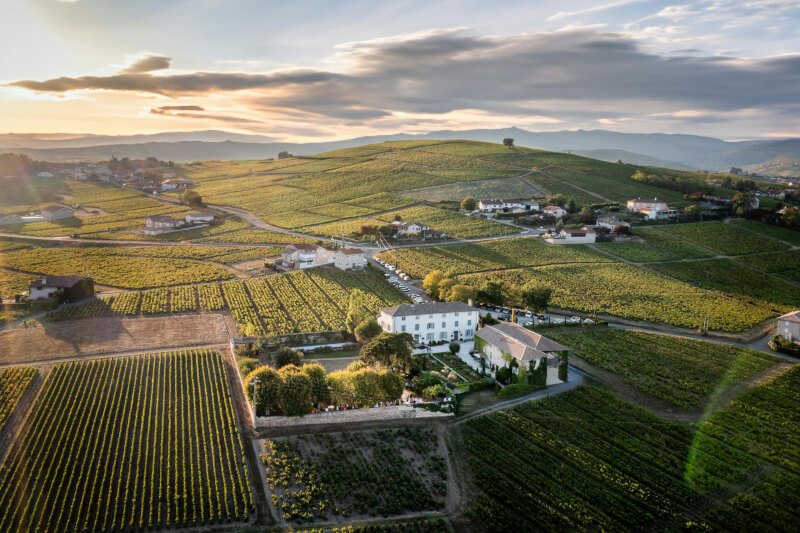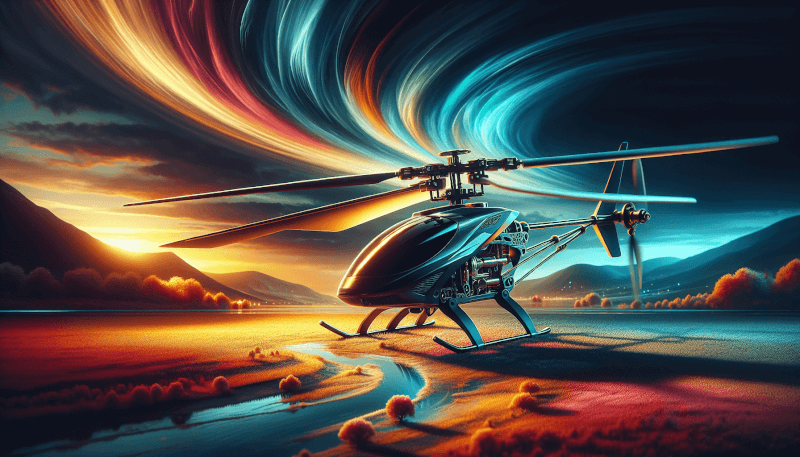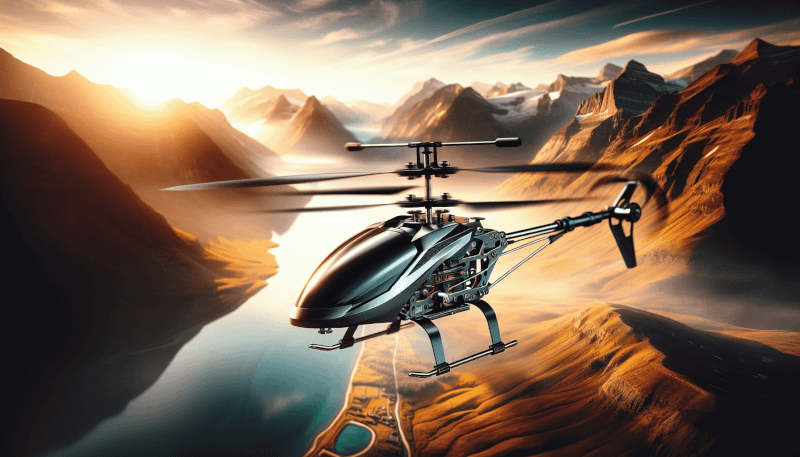So you’ve got yourself a shiny new RC helicopter and you’re itching to start capturing breathtaking aerial footage? Well, you’ve come to the right place! In this article, we’ll guide you through the essential steps of setting up your RC heli for aerial videography. From selecting the right equipment to ensuring the smoothest flight, we’ll provide you with all the tips and tricks you need to take your videography skills to new heights. Get ready to unleash the filmmaker within as we explore the exciting world of aerial videography with your RC heli!
Selecting the Right RC Heli
Consider the camera payload
When selecting an RC heli for aerial videography, it’s crucial to consider the weight and size of the camera and any additional equipment you plan to attach to the heli. Different helicopters have varying weight capacities, so it’s important to choose one that is capable of carrying the camera payload without sacrificing stability or maneuverability.
Choose a stable and maneuverable heli
Stability and maneuverability are key factors to consider when choosing an RC heli for aerial videography. A stable heli will produce smoother footage, while a maneuverable heli will allow you to capture shots from various angles and perspectives. Look for helis with advanced stabilization systems and agile flight characteristics to ensure optimal video quality.
Ensure compatibility with camera mounting systems
Not all RC helis are compatible with every type of camera mounting system. Before making a purchase, carefully check the specifications and compatibility of the heli with the camera mount you plan to use. This will ensure that your camera can be securely attached and aligned properly to capture steady and level footage.
Camera Selection
Opt for a lightweight camera
When it comes to aerial videography, choosing a lightweight camera is essential. The weight of the camera directly affects the performance and flight characteristics of the RC heli. Opting for a lightweight camera will allow for longer flight times, smoother flight maneuvers, and better overall control of the heli.
Choose a camera with image stabilization
Image stabilization is a crucial feature to look for in a camera for aerial videography. This technology helps mitigate the effects of vibrations and movements during flight, resulting in smoother and more professional-looking footage. Whether it’s optical, electronic, or a combination of both, image stabilization will greatly enhance the quality of your aerial videos.
Consider the camera’s image quality and resolution
The image quality and resolution of the camera will determine the clarity and detail of your aerial footage. Higher resolution cameras will allow for better quality videos and the ability to crop or zoom without losing significant detail. Consider the type of shots you plan to capture and choose a camera with the appropriate image quality and resolution to meet your needs.

Gimbal Systems
Understand the different types of gimbals
Gimbals are crucial for stabilizing cameras during flight and minimizing vibrations. There are various types of gimbals available, including 2-axis and 3-axis gimbals. 2-axis gimbals provide stabilization on the roll and pitch axes, while 3-axis gimbals offer stabilization on the roll, pitch, and yaw axes. Understanding the different types and their capabilities will help you make an informed decision based on your specific videography needs.
Choose a gimbal based on payload capacity
Just like selecting an RC heli, it’s important to choose a gimbal that can handle the weight of your camera and any additional equipment. Gimbals have weight limits and may not be suitable for certain cameras or lenses. Ensure that the gimbal you choose can accommodate your camera’s weight to achieve smooth and stable footage.
Ensure compatibility with your RC heli
Gimbals come in different configurations and sizes, and not all gimbals are compatible with every RC heli. Before purchasing a gimbal, ensure that it is compatible with your RC heli’s mounting system and can be properly integrated. Compatibility issues can lead to instability and ineffective stabilization, compromising the quality of your aerial videos.
Remote Control Setup
Install a receiver on your RC heli
To control your RC heli and its camera remotely, you will need to install a receiver on the heli. The receiver receives signals from the transmitter and translates them into actions on the heli. Ensure that the receiver is securely mounted and properly connected to the heli’s electronics for reliable and responsive control.
Program the transmitter for camera control
To have full control of your camera’s functionalities during flight, you will need to program your transmitter accordingly. Many transmitters offer customizable settings and channels that can be assigned to specific camera functions such as shutter release, zoom, or focus. Take the time to program the transmitter to your desired camera control settings for a seamless and convenient aerial videography experience.
Configure control channels for smooth operation
Configuring the control channels on your transmitter is crucial for smooth operation of your RC heli and camera. Assigning control channels to specific functions will allow you to operate the camera and heli simultaneously, ensuring precise control and coordination. Get familiar with the control configuration options of your transmitter and set them up in a way that feels comfortable and intuitive for you.

Power and Battery Management
Determine the power requirements
Before taking your RC heli for aerial videography, it’s important to determine the power requirements of both the heli and the camera. Different helis and cameras have varying power needs, and it’s essential to ensure that your batteries can provide adequate power for the entire duration of your flight. Underestimating power requirements can result in shorter flight times or even mid-air power failures.
Choose the right batteries and charging setup
Selecting the right batteries for your RC heli and camera is crucial for optimal performance and reliability. Look for batteries with sufficient capacity and discharge rates that can handle the power demands of your equipment. Additionally, invest in a reliable charging setup that allows you to safely and efficiently charge your batteries, ensuring they are always ready for your next aerial videography session.
Implement battery monitoring systems
To prevent unexpected power failures during flight, it’s important to implement battery monitoring systems. These systems can range from simple battery voltage indicators to advanced telemetry systems that provide real-time information about battery performance. Monitoring your battery status throughout your flight will allow you to make informed decisions and take necessary precautions to avoid power-related incidents.
Camera Mounting
Choose a secure and vibration-damped mounting system
To ensure stable and high-quality footage, it is crucial to choose a secure and vibration-damped mounting system for your camera. Vibrations can significantly impact the image and video quality, resulting in shaky and blurry footage. Look for mounting systems that provide secure attachment and effective vibration dampening mechanisms to minimize vibrations and produce smooth and professional-looking videos.
Properly balance the camera setup
Properly balancing the camera setup on your RC heli is essential for stable flight and optimal performance. An imbalanced camera can affect the heli’s flight characteristics, making it difficult to control and potentially leading to unstable footage. Take the time to carefully balance the camera setup, ensuring that the weight distribution is even and centered to achieve smooth flights and steady footage.
Ensure easy access for camera adjustments
During aerial videography, it may be necessary to make adjustments to the camera’s settings, angles, or lens. Ensuring easy access to the camera controls and adjustments is essential for making quick changes while in flight. Consider the design and placement of your camera mounting system, ensuring that you can easily reach the camera controls without compromising flight stability or safety.

Onboard Video Transmitters
Select a reliable video transmitter
Onboard video transmitters allow you to transmit the live video feed from your camera to a ground video monitoring system. It’s crucial to select a reliable video transmitter that can consistently provide high-quality video transmission without interference or signal loss. Look for transmitters with good range, multiple frequency options, and robust signal transmission capabilities for a seamless and uninterrupted video feed.
Configure the transmitter for optimal signal quality
To ensure optimal signal quality and reduce the risk of interference, it’s important to properly configure the video transmitter. Select the appropriate frequency, power output, and adjust other settings based on your flight conditions and local regulations. Proper configuration will result in a strong and clear video signal, allowing you to monitor and capture your aerial footage without interruptions or image degradation.
Consider frequency restrictions and regulations
When choosing a video transmitter for your RC heli, it’s important to consider frequency restrictions and regulations in your area. Different countries and regions may have specific frequency bands, power limitations, or licensing requirements for video transmission. Familiarize yourself with the applicable regulations and ensure that your video transmitter operates within the permitted frequency range to avoid legal issues and interference.
Ground Video Monitoring
Choose a suitable video monitor or goggles
To monitor the live video feed from your RC heli, it’s essential to choose a suitable video monitor or goggles. Consider factors such as screen size, resolution, and compatibility with your video transmitter and receiver. Whether you prefer a dedicated video monitor or immersive FPV goggles, select a system that provides a clear and immersive viewing experience for accurate framing and smooth operation.
Consider signal range and interference
The range and stability of the video signal received on the ground are important considerations for aerial videography. Ensure that the video receiver has a sufficient range, taking into account any potential signal loss or interference caused by environmental factors such as buildings, obstacles, or other wireless devices. A reliable and stable video signal will enable you to capture footage with confidence and avoid missing any important moments.
Optimize display settings for better visibility
To optimize the visibility and clarity of the live video feed, it’s important to adjust the display settings of your video monitor or goggles. Brightness, contrast, and other display settings can be customized to enhance the visibility of details and improve the overall viewing experience. Experiment with different settings to find the optimal configuration for your visibility preferences and the prevailing lighting conditions during your aerial videography sessions.

Flight Planning and Safety
Plan your flight path and waypoints
Before taking off with your RC heli for aerial videography, it’s crucial to plan your flight path and waypoints. Identify the areas you want to capture, take note of any potential obstacles or no-fly zones, and plan the sequence of shots you want to film. By having a clear flight plan, you can ensure safety, maximize your recording time, and capture the desired footage efficiently.
Consider weather conditions and airspace regulations
Safety should always be a top priority when operating an RC heli for aerial videography. Consider the prevailing weather conditions, such as wind speed, temperature, and rain, as they can affect the stability and control of your heli. Additionally, familiarize yourself with local airspace regulations and any restrictions or permits required for flying in certain areas. Adhering to weather and airspace regulations will help ensure the safety of your flights and avoid any legal issues.
Implement fail-safe systems for emergencies
To mitigate the risk of accidents or emergencies during flight, it’s important to implement fail-safe systems on your RC heli. These systems can include features such as return-to-home functions, auto-land capabilities, or emergency cutoff switches. Should any unexpected situations arise, these fail-safe systems will help safeguard your equipment and prevent potential damage or injury.
Post-Processing and Editing
Transfer and organize video footage
Once you’ve completed your aerial videography flight, it’s time to transfer and organize your video footage. Use a reliable and fast method to transfer the files from your camera or memory card to your computer or storage device. Organize the footage in a logical manner, creating folders or categories for easy retrieval during the editing process.
Use video editing software to enhance the footage
Video editing software is an essential tool for enhancing and refining your aerial footage. Trim or remove unwanted sections, adjust exposure, color correct, or apply filters to enhance the overall visual appeal of your videos. Take advantage of the editing software’s capabilities to fine-tune the footage, ensuring that it matches your creative vision and captures the essence of the aerial environment.
Add music, titles, and transitions for a professional touch
To add a professional touch to your aerial videos, consider incorporating music, titles, and transitions. Select appropriate background music that complements the mood or theme of your footage. Add titles or captions to introduce scenes or provide context. Smooth transitions between clips can enhance the flow and visual appeal of your videos. With these added elements, your aerial videography will come to life and engage your viewers in a more immersive and captivating way.
As you set up your RC heli for aerial videography, remember to prioritize safety, ensure compatibility with your equipment, and carefully consider the specific needs of your videography projects. With the right setup and preparation, you’ll be able to capture stunning aerial footage that showcases the world from a unique perspective. Prepare yourself for hours of creativity, exploration, and the joy of sharing breathtaking aerial videos with others.



